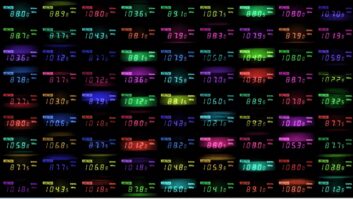
Studio equipment is tested at D&M Broadcast in Italy before being shipped to Guinea.
CONAKRY, Republic of Guinea — Radio is the most important source of information for the people of Guinea and the only medium able to reach the entire country.
The Rural Radio of Guinea network, comprising four regional radio stations, Labé, Kankan, Kindia and Nzérékoré, and 19 local rural radios, has a mission to educate and inform the country’s population.
Airing in a number of local languages, the network’s broadcasts are divided into nine types. These include education, agricultural/pastoral technology, health, environment, community participation, society and culture and news.
KEY ROLE
RRG is upgrading the country’s rural radio stations so that they can reach more listeners with better content. In January 2015 Italian systems integrator D&M Broadcast was commissioned to revamp both the studios and the broadcasting facilities at regional radio stations based in Mandiana, Dabola, Siguiri, Faranah and Kindia.
“The stations aired for several years using basic equipment,” explains Marco Giovannini, CEO of D&M Broadcast. “In general before the refurbishment, each studio had a mixer, cassette recorder and a low-power FM transmitter powering an antenna placed on top of the building.”

Marco Giovannini, CEO of D&M Broadcast
Rural radio stations play a key role within countries like Guinea, where road infrastructures are poor and traveling between even relatively short distances can take more than a day. Here radio reaches most of the population, contrary to television, which is limited due to cost and infrastructure.
These stations provide essential messages and programs on health and safety as well as advice on farming and agriculture. The recent breakout of the Ebola virus underlined the importance of disseminating life-saving information since the spread of Ebola can be limited through specific behavior and rural stations can quickly deliver this information to a significant number of people.
Rural radio stations are also often the only source of news and information for the majority of people living outside major towns. Professionals such as physicians, agronomists and veterinarians use the medium to reach out to the population, educating them on important issues.
“Instead of driving from village to village these experts go to the local rural radio station, and broadcast their message,” said Giovannini.
SAVING LIVES
“Radio stations also usually act as the delivery point of essential goods, like seeds or medicine. “The presenter notifies listeners that a specific good is available and people go to the radio station to get it.”

Each studio of all the revamped stations features
the same design and equipment.

The STL links are ready for shipment to Guinea.
D&M Broadcast designed new studios for these stations and then sourced and installed the required equipment. Each station took delivery of an AEV BSM 622 Evolution USB broadcasting console featuring five balanced mic inputs and six unbalanced line inputs; a Numark CDN77USB dual CD player and two DIAL 103 GSM gateways.
The company also installed Sennheiser e835 mics with K&M and Icon mic arms, AKG K99headphones and PreSonus Eris 4.5 active studio monitors.

A detailed design is made of each upgraded RRG station.
Click on the Image to Enlarge
“For each station we also supplied one Flu-O Radio Essential automation workstation with BitOnLive on-air software to manage playout, ingest, playlist, advertising and audio editing, and a D&M Broadcast Vibe 3 FM audio processor with a built-in RDS encoder,” Giovannini said.
As part of the modernization process, D&M also redesigned the stations’ transmitter sites. “Previously, the transmitter and the antenna were located on top of each station’s studio,” said Giovannini. “This location doesn’t necessarily allow the user to benefit from full transmitting power capacity. The rural stations now transmit their signal through an STL to a separate transmitting site, typically located on a nearby mountain,” he explained.
The installed STLs, manufactured by DB Elettronica, operate in the 300–512 MHz band and have an output power of 15 W. The stations also use DB Elettronica 1 kW Mozart FM transmitters,radiate through vertical polarized antenna systems made of four-7/8-inch dipoles.
Since the AC power from the public grid is not always reliable, D&M Broadcast also supplied diesel generators with UPS at all installations.
“The configuration is the same for each station. This allows for quicker servicing and provision of spare parts, if necessary,” said Giovannini. “We supplied two spare transmitters in addition to the five that have been installed. Anyone can just go to the faulty site and replace the transmitter with a spare one, and the station will be on air again.”
Davide Moro reports on the industry for Radio World from Bergamo, Italy.







